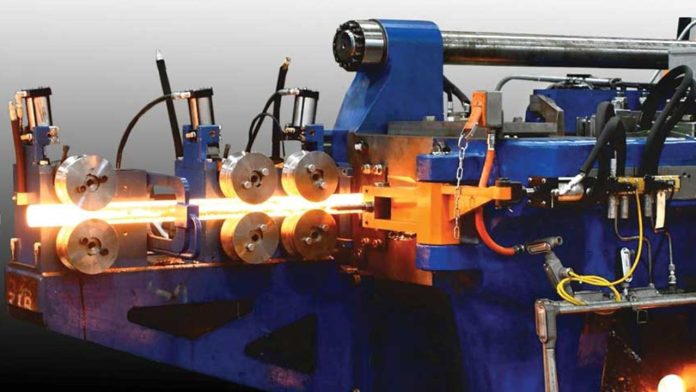The manufacturing industry is in the midst of a transformative shift, with automated forging emerging as a driving force behind this evolution. Automated forging not only advances design possibilities but also revolutionizes engineering processes and unlocks new applications, leading to unprecedented levels of innovation and productivity.
From advancing design possibilities to revolutionizing engineering processes and unlocking new applications, automated forging is paving the way for innovation and shaping the future of manufacturing. By combining the precision and efficiency of automation with the traditional artistry of forging, new possibilities for design and engineering are being unlocked.
Advancing Design Possibilities
Automated forging allows for the creation of intricate shapes, organic forms, and lightweight structures, enabling designers to unleash their creativity and bring visionary concepts to life.
Pushing Boundaries
Automated forging empowers designers to push the boundaries of what is possible. With the ability to achieve complex shapes and intricate details, automated forging opens up new avenues for creative expression and innovation. Designers are now able to explore organic forms, intricate geometries, and lightweight structures.
Enhancing Complexity
Automation in forging enables the production of intricate designs with consistent precision. Complex components that once required labor-intensive manual forging can now be manufactured with exceptional accuracy and repeatability. This advancement enables the creation of highly intricate parts for industries such as automotive and medical devices.
Streamlining Prototyping
Automated forging accelerates the prototyping phase, allowing designers to iterate and refine their designs more rapidly. With shorter lead times and the ability to produce functional prototypes, designers can evaluate the performance and functionality of their designs early in the development process.
Revolutionizing Engineering Processes
Revolutionizing Engineering Processes signifies the transformative impact of automated forging on engineering practices within the manufacturing industry.
Precision and Consistency
Automated forging ensures a high level of precision and consistency in engineering specifications. By leveraging the application of industrial robots in automated forging and utilizing computer-controlled systems, manufacturers can achieve tight tolerances, ensuring that the forged components meet the required specifications with minimal variation.
Optimizing Material Utilization
Automated forging increases resource utilization, decreases waste, and lowers overall costs. Engineers can use contemporary modelling and simulation techniques to optimize design and material distribution, resulting in lightweight components that are strong and durable. This efficient use of materials conserves resources and assures sustainability.
Reducing Lead Times
Automated forging significantly reduces lead periods. In production cycles. With streamlined processes and the elimination of manual interventions, manufacturers can meet tight deadlines and respond swiftly to market demands. The shortened lead times allow for faster product launches and increased competitiveness in a rapidly evolving marketplace.
Unlocking New Applications
Unlocking New Applications refers to the ability of automated forging to enable the creation of innovative and diverse products for various industries.
Lightweight Solutions
By precisely controlling the forging process, manufacturers can remove excess material and design components that are optimized for weight reduction. This is especially beneficial to industries such as automobile and aerospace, where lightweight is essential for increased performance and fuel economy.
Performance Boost
Automated forging enhances product functionality by enabling the production of components with superior performance characteristics. Through precise control of the forging parameters, manufacturers can enhance the material properties, resulting in high-performance components that meet the stringent requirements of demanding applications.
Customization at Scale
With digital design capabilities and automated production lines, manufacturers can efficiently adapt designs to meet specific customer requirements. This flexibility opens up opportunities for mass customization, allowing manufacturers to deliver tailored solutions without compromising on cost-effectiveness or production efficiency.
Conclusion
Automated forging is revolutionizing the manufacturing landscape by unlocking new possibilities for design and engineering. By leveraging the dynamic intersection of automated forging and design engineering, the industry is poised to embark on a remarkable journey of progress, shaping the way we design, engineer, and manufacture for generations to come.











